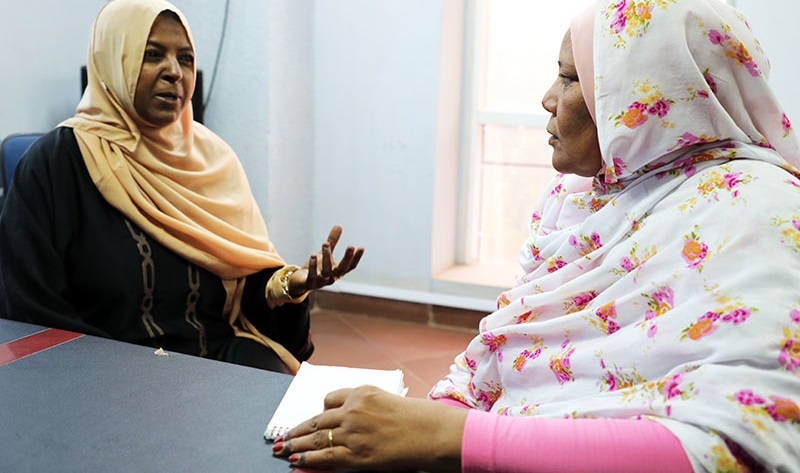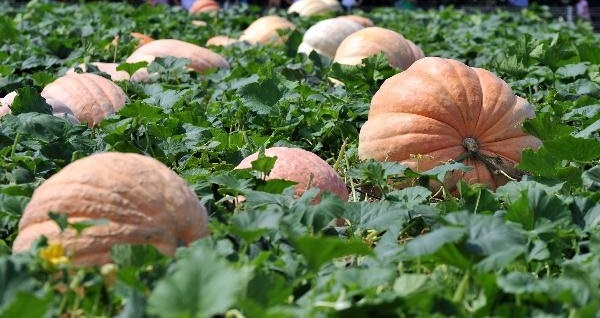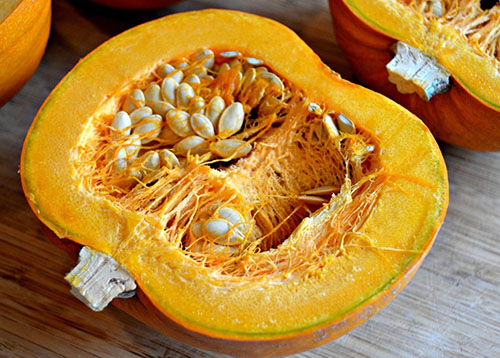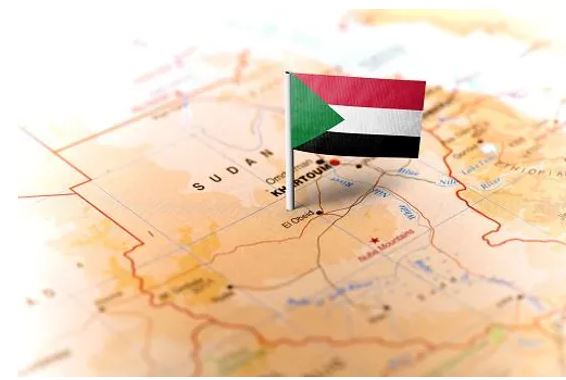Dr. Ehsan Finds Pumpkins Can Make Nutritional, Therapeutic Wonders
21 July, 2019
Dr. Ehsan speaks to the reporter
KHARTOUM (Sudanow) - For many years now, Dr. Ehsan Mohammad Alhadi has been pondering and researching the nutritional and therapeutic characteristics of the common vegetable ‘pumpkin’ and has come out with wonders about this plant.
Dr. Ehsan, a specialist in medicinal and aromatic plants (a graduate of the University of Khartoum), says her focus on this plant was prompted by two nearly congruent verses in the Holy Koran and the Holy Old Testament that described the story of Prophet Jonah (Younis in the Koran) who was swallowed by a whale after he appeared impatient about his town’s citizens’ intransigence and their refusal of the Almighty’s words. According to the two holy books, the Almighty made the whale to eject Jonah after he repented his error. Because of his bad health condition due to his long stay in the whale’s abdomen, the Almighty grew a pumpkin tree on Jonah that shaded him from the hot sun and provided him with food and with medicine that healed his heavily bruised skin.
Dr. Ehsan’s laboratory research on pumpkin was crowned with a lot of valuable information about this plant that gained her admiration in scientific forums she took part in.
One of these occasions was when she participated in an international conference on scientific wonders (or miracles) in the Holy Koran in Spain, in 1997. A paper on the nutritional and healing functions of pumpkin in that conference earned her a lot of acclaim from the participants.


Dr. Ehsan then published a number of papers on the treatment of abdominal giardia with pumpkin seeds. She had successfully experimented this treatment on a lot of patients with giardia and received spectacular results.
Her experimentations on pumpkins had covered all the plant’s sections: The seeds, the seed coat and the leaves. She had tested all these sections with respect to the presence and the quantities of amino acids, salts and their healing properties. She did not confine her testing to one variety of pumpkin (There are dozens of varieties of this plant, depending on the geographical environment, the soil and the weather). Of these varieties she experimented on cucurbita pepo, cucurbita maxima, cucurbita moschata and lagenaria siceraria sweet species. All these varieties  have a long shelf life that can go up to nine months. The chemical survey of these varieties’ extracts has covered the leaves, the seeds coat, the petroleum ether, the methanol, the liquid extract and the characteristics of seed’s longevity.
have a long shelf life that can go up to nine months. The chemical survey of these varieties’ extracts has covered the leaves, the seeds coat, the petroleum ether, the methanol, the liquid extract and the characteristics of seed’s longevity.
It was found that all these varieties have a long shelf-life. Tests were also conducted on amino acids in raw and cooked seeds and on fatty acids in the seeds. The testing also included the evaluation of the petroleum ether extracts, the chloroform, the methanol content in the sections of the aforesaid varieties and their anti-bacterial properties in the healing of such diseases such as candida alicans and general and sugar wounds, always reaching excellent results. Botanic chemical surveys have shown the presence of steriodite glycoside and turbinate in all parts of the aforesaid plants. All varieties have registered the presence of cumarin in all the plant’s sections, save the leaves of local Sudanese pumpkins. Leaves and seed coats have shown the presence of carotene, while seeds have shown the presence of citrol. Glodite salts have appeared in the seeds of cucurbita pepo. Soaps were present only in leaves while tanning substances were found in leaves and seed coats.
All seeds had contained eight basic amino acids and nine non-basic amino acids. Cooked pumpkins had shown an overall high rate of amino acids. Wound- healing amino cell renewal acids like proline, glycine, hydralazine, cystine and lysine scored the best test results.
Mineral tests have shown the presence of phosphorous, potassium, sodium, calcium, magnesium, zinc and copper. Tests for kidney and liver functions after taking pumpkin did not show any signs of toxins.
With respect to viability against giardia all varieties have shown effectiveness. But the seed extract of petroleum ether had given the best results, compared with other types. It is far more effective than the chemical drug flagyl in the treatment of giardia, maintains Dr. Ehsan. 
Dr. Ehsan said an ointment she created from pumpkin extract was far more effective than chemical ointments in the healing of wounds. “I can defy any pharmaceutical ointment to give the wound healing effect given by my pumpkin extract ointment, even in the formidable diabetic wounds,” she said.
“I have registered a patent for this ointment with the Sudanese Intellectual Property Agency,” she added.
Back to the story of Prophet Jonah, Dr. Ehsan said it was the tender pumpkin leaves that helped Him endure the harsh environment around Him. The leaves also supplied Him with amino acids that nourished Him and helped repair His scarred skin.
One unusual characteristic of pumpkin is that the amount of glycine amino acid increases from 66 milligram to 100 milligram after it is cooked, contrary to other vegetables.
Dr. Ehsan also believes that pumpkin removes depression. Her argument in this is the verse in the Koran that says: “We removed the gloom that beset him (Jonah)”. That was the result of his stay under the pumpkin tree that contains the choline substance, a molecule that precedes the formation of acetylcholine that enters into a number of bodily functions like memory and muscle control, she argues.
In addition, pumpkin is anti-cholesterol and fights blood fats. It is also anti-oxidant and guards the liver against toxins.
“What has really surprised me is that the liquid extract of this plant has maintained its physical, chemical and therapeutic properties for a long time. I had put it in a deep freezer for two years and I had put it in normal temperature for months and it did not rot and its therapeutic properties remained the same,” she said.
“I think this is because of the concentrate of tanning substances in the leaves,” she said.
In a paper she had published, Dr. Ehsan has presented a prescription for the treatment of giardia using pumpkin seeds: The seeds are crushed and then taken with water on an empty stomach. The patient should abstain from taking any food for the coming five hours.
END
YH/AS








